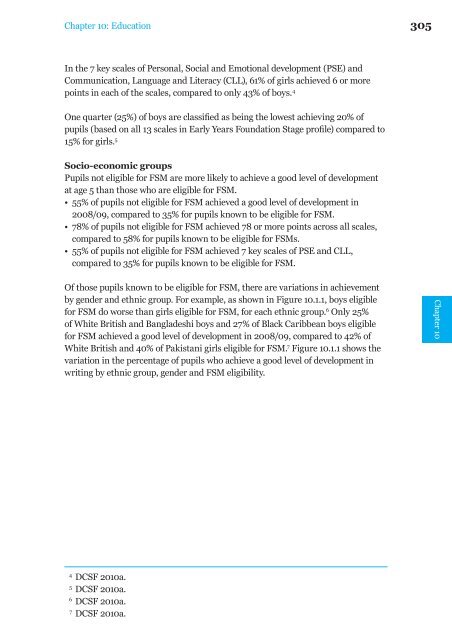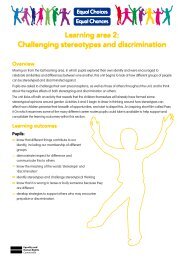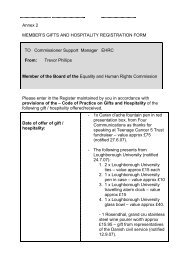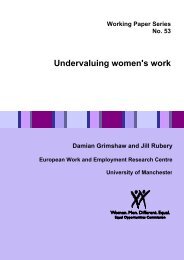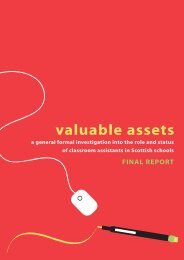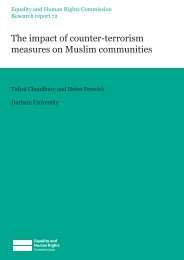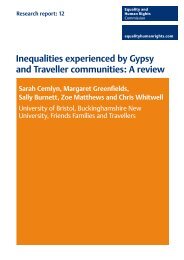Chapter 10: Education - Equality and Human Rights Commission
Chapter 10: Education - Equality and Human Rights Commission
Chapter 10: Education - Equality and Human Rights Commission
You also want an ePaper? Increase the reach of your titles
YUMPU automatically turns print PDFs into web optimized ePapers that Google loves.
<strong>Chapter</strong> <strong>10</strong>: <strong>Education</strong> 305<br />
In the 7 key scales of Personal, Social <strong>and</strong> Emotional development (PSE) <strong>and</strong><br />
Communication, Language <strong>and</strong> Literacy (CLL), 61% of girls achieved 6 or more<br />
points in each of the scales, compared to only 43% of boys. 4<br />
One quarter (25%) of boys are classified as being the lowest achieving 20% of<br />
pupils (based on all 13 scales in Early Years Foundation Stage profile) compared to<br />
15% for girls. 5<br />
Socio-economic groups<br />
Pupils not eligible for FSM are more likely to achieve a good level of development<br />
at age 5 than those who are eligible for FSM.<br />
• 55% of pupils not eligible for FSM achieved a good level of development in<br />
2008/09, compared to 35% for pupils known to be eligible for FSM.<br />
• 78% of pupils not eligible for FSM achieved 78 or more points across all scales,<br />
compared to 58% for pupils known to be eligible for FSMs.<br />
• 55% of pupils not eligible for FSM achieved 7 key scales of PSE <strong>and</strong> CLL,<br />
compared to 35% for pupils known to be eligible for FSM.<br />
Of those pupils known to be eligible for FSM, there are variations in achievement<br />
by gender <strong>and</strong> ethnic group. For example, as shown in Figure <strong>10</strong>.1.1, boys eligible<br />
for FSM do worse than girls eligible for FSM, for each ethnic group. 6 Only 25%<br />
of White British <strong>and</strong> Bangladeshi boys <strong>and</strong> 27% of Black Caribbean boys eligible<br />
for FSM achieved a good level of development in 2008/09, compared to 42% of<br />
White British <strong>and</strong> 40% of Pakistani girls eligible for FSM. 7 Figure <strong>10</strong>.1.1 shows the<br />
variation in the percentage of pupils who achieve a good level of development in<br />
writing by ethnic group, gender <strong>and</strong> FSM eligibility.<br />
<strong>Chapter</strong> <strong>10</strong><br />
4<br />
DCSF 20<strong>10</strong>a.<br />
5<br />
DCSF 20<strong>10</strong>a.<br />
6<br />
DCSF 20<strong>10</strong>a.<br />
7<br />
DCSF 20<strong>10</strong>a.


